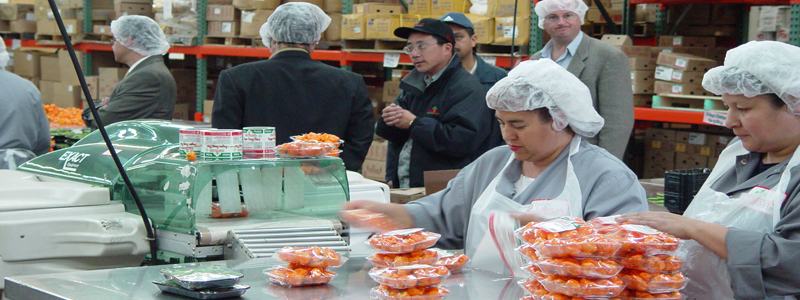HACCP - Hazard Analysis and Critical Control Point
HACCP is a system that helps food business operators look at how they handle food and introduces procedures to make sure the food produced is safe to eat.
HACCP outlines good manufacturing processes for all food sectors and can be key to your business when taking part in international trade.
The principle of HACCP can be applied to production, meat slaughter and processing, shipping and distribution, food service and in home preparation.
The seven principles of HACCP are:
- Conduct a Hazard Analysis
- Identify Critical Control Points (CCP)
- Establish Critical Limits for CCP
- Establish Monitoring Procedures
- Establish Corrective Actions
- Establish Record keeping Procedures
- Establish Verification Procedures
HACCP is a systematic preventative system that uses common sense application of scientific principles. The most important aspect of HACCP is that it is a preventative system rather than an inspection system of controlling food safety hazards. Prevention of hazards cannot be accomplished by end product inspection, so controlling the production process with HACCP offers the best approach. The application of HACCP is systematic because structured hazard analysis and implementation are provided. The process is common sense in that each processor understands their operation and is best able to assess controlling the process. HACCP is also science-based and so the controls that are placed in the process should be based on scientific information. The
HACCP system has two major components. The HA of HACCP represents the logic in the hazard analysis which identifies the where and how of hazards. The CCP of HACCP represents the critical control points that provide the control of the process and the proof of the control. The end objective of HACCP is to make the product as safe as possible and to be able to prove that the product was processed as safe as possible. This does not mean that HACCP provides 100% assurance of food safety to consumers, but does mean that a meat processing company is doing the best job possible for safe food production.
What are the benefits of HACCP?
- Implement internationally recognized food safety hazard controls
- Conveys a degree of confidence required by consumers, retailers and buyers within the food industry
- Provides buyers, consumers, government enforcement and trade agencies with justified assurance that control systems are in place to assure the safe production of food
- Align HACCP with ISO 22000 to improve food safety management systems
- Effectively manage food safety risks across the whole supply chain
- Continually review and improve your system so it stays effective
- It is based on the internationally-recognized Codex Alimentarius standards and guidelines and other national standards
- Regular assessments help you to continually monitor your food safety system
- HACCP can add value to your entire supply chain with improved hazard controls, whatever its size or location.


